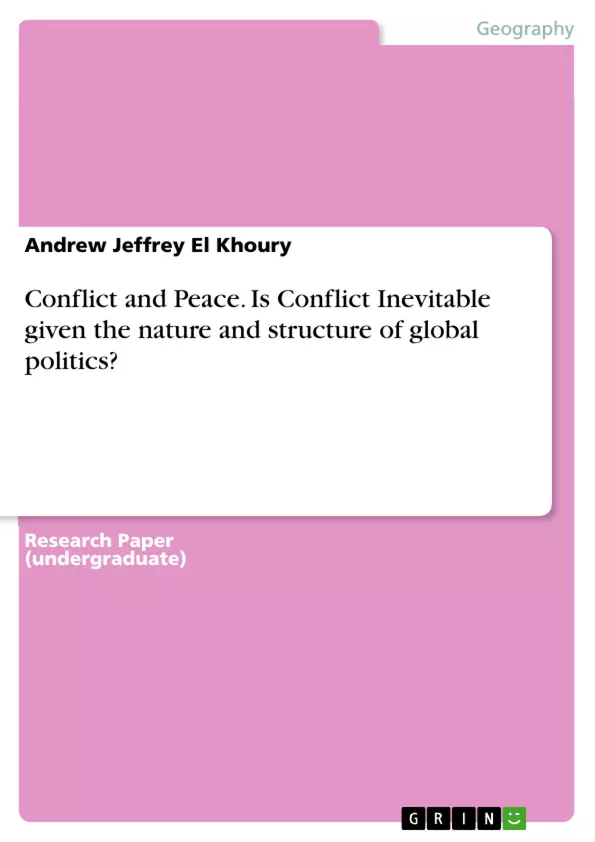This report provides an overview of different arguments concerning how inevitable conflicts are, considering the current structure of world politics.
Fron the text:
- Balance of Power;
- Global Interdependence
Table of Contents
- Introduction
- Balance of Power
- Global Interdependence
Objectives and Key Themes
This report aims to analyze whether conflict is inevitable given the nature and structure of global politics. It explores arguments that support and reject this notion, drawing upon theories and historical examples to gain a deeper understanding of different perspectives.
- The inevitability of conflict in global politics
- Realist theories of conflict and power dynamics
- The role of global interdependence and economic factors
- The impact of international institutions and their limitations
- The potential for cooperation and peaceful solutions
Chapter Summaries
Introduction
The report introduces the question of whether conflict is inevitable in global politics, referencing historical patterns of conflict and the conflicting perspectives on this issue.
Balance of Power
This chapter examines realist theories, particularly classical and neo-realism, which argue for the inevitability of conflict due to human nature and the pursuit of power in the international system. It provides examples such as Joseph Stalin and the Cold War to illustrate these concepts.
Global Interdependence
This section explores the argument that global interdependence, particularly in economic terms, creates incentives for cooperation and reduces the likelihood of conflict. It uses examples like Iran, Japan, and the US role in Asia to illustrate this point.
Keywords
The key concepts explored in this text include conflict, global politics, realism, balance of power, global interdependence, international institutions, economic growth, and security dilemma.
- Citar trabajo
- Andrew Jeffrey El Khoury (Autor), 2016, Conflict and Peace. Is Conflict Inevitable given the nature and structure of global politics?, Múnich, GRIN Verlag, https://www.grin.com/document/352992



